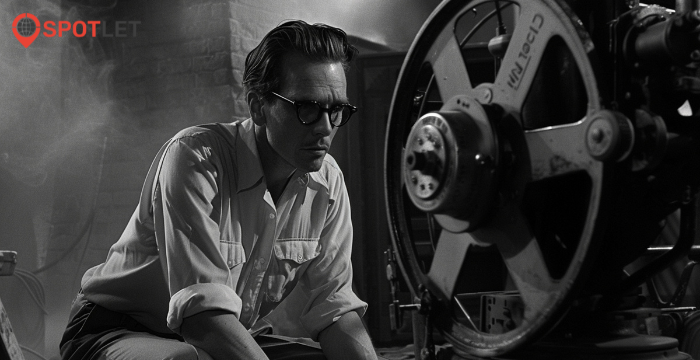
The Indian film industry, often colloquially referred to as Bollywood, is a cultural phenomenon that has captivated audiences both in India and around the world. With its unique storytelling, vibrant music, and larger-than-life productions, Indian cinema has left an indelible mark on the global entertainment landscape. However, the history of the Indian film industry is not confined to Bollywood alone; it encompasses a rich tapestry of regional film industries, each with its distinctive characteristics and contributions. In this comprehensive article, we will embark on an immersive cinematic journey through time to explore the fascinating and intricate history of the Indian film industry, including its regional variations, key milestones, and the profound impact it has had on Indian society and the world at large.
I. Origins and Early Years
The Indian film industry’s origins can be traced back to the late 19th century when the Lumière Brothers’ cinematograph first made its way to India. The inception of Indian cinema occurred in 1913 with the release of “Raja Harishchandra,” a silent film directed by Dadasaheb Phalke. This momentous occasion marked the birth of Indian cinema, setting the stage for its eventual growth and development.
II. The Golden Age of Indian Cinema
The 1940s and 1950s are widely regarded as the golden age of Indian cinema. During this period, filmmakers like Raj Kapoor, Guru Dutt, and Bimal Roy crafted cinematic masterpieces that continue to be celebrated today. It was during these years that songs and dances became integral components of Indian films, and iconic stars such as Raj Kapoor and Dev Anand achieved legendary status.
III. The Emergence of Regional Cinema
While Bollywood was flourishing, regional film industries began to thrive as well. South India, in particular, witnessed the rise of the Tamil, Telugu, Malayalam, and Kannada film industries. Each of these industries developed its unique storytelling style, cinematic traditions, and a galaxy of talented actors. Legendary figures like M.G. Ramachandran and Sivaji Ganesan emerged as cultural icons in the South Indian film industry.
IV. Parallel Cinema Movement
In the 1950s and 1960s, a parallel cinema movement gained momentum in India, spearheaded by filmmakers such as Satyajit Ray, Ritwik Ghatak, and Mrinal Sen. These directors focused on creating socially relevant and artistically rich films that often deviated from the mainstream Bollywood fare. Satyajit Ray’s “Pather Panchali” and other works garnered international acclaim, propelling Indian cinema onto the global stage.
V. Technological Advancements
The Indian film industry continued to evolve with the adoption of new technologies. The 1970s and 1980s witnessed the transition from black and white to color films, as well as the advent of sophisticated special effects. This era also saw the rise of action-packed masala films, epitomized by the “angry young man” persona of Amitabh Bachchan.
VI. The Global Reach of Bollywood
The 1990s marked a significant turning point for Bollywood as Indian films began to find a broader international audience. Movies such as “Dilwale Dulhania Le Jayenge” and “Kuch Kuch Hota Hai” gained immense popularity in countries with significant South Asian diasporas. Bollywood’s distinct dance sequences and melodious songs became synonymous with Indian cinema on the global stage.
VII. The 21st Century and Beyond
In the 21st century, the Indian film industry has continued to flourish and evolve. Bollywood has produced critically acclaimed films such as “Slumdog Millionaire,” which won multiple Oscars, and “Lagaan,” which was nominated for the Academy Award for Best Foreign Language Film. Indian actors, including Priyanka Chopra and Deepika Padukone, have successfully ventured into Hollywood, further expanding the global reach of Indian cinema.
VIII. Regional Industries on the Rise
While Bollywood remains at the forefront of Indian cinema, regional film industries have also witnessed remarkable growth. South Indian cinema, in particular, has gained international recognition, with films like “Baahubali” achieving unprecedented global success. These regional industries continue to produce high-quality content that resonates strongly with local audiences while also attracting global attention.
IX. The Impact of Indian Cinema
The Indian film industry has had a profound impact on Indian society and culture. It has served as a mirror, reflecting the nation’s social and political changes, and has often tackled critical issues such as poverty, gender equality, and communal harmony. Films like “Mother India” and “Lipstick Under My Burkha” have sparked important societal conversations and have influenced public discourse.
X. Film Production Companies in India
India is home to a multitude of film production companies that play pivotal roles in shaping the industry. Established studios such as Yash Raj Films and Dharma Productions have produced some of the most iconic Bollywood films. Independent production houses have also made significant contributions, nurturing emerging talent and experimenting with innovative storytelling techniques.
XI. Challenges and Opportunities
Despite its successes, the Indian film industry faces several challenges, including piracy, censorship issues, and the need for greater diversity and inclusion. However, it also possesses vast opportunities to further expand its global footprint by embracing digital platforms, fostering fresh talent, and continuing to produce content that resonates with a diverse audience.
Conclusion
The history of the Indian film industry is a captivating journey filled with drama, music, and the stories of colorful characters who have left an indelible mark on both Indian and global audiences. From its modest beginnings in the early 20th century to becoming a global cultural phenomenon, Indian cinema has come a long way. Bollywood and regional film industries have left an indelible mark on the hearts of millions, both in India and across the world. As the industry continues to evolve and adapt, one thing remains certain: the magic of Indian cinema will persistently captivate audiences for generations to come, shaping the future of entertainment and storytelling in India and beyond.

